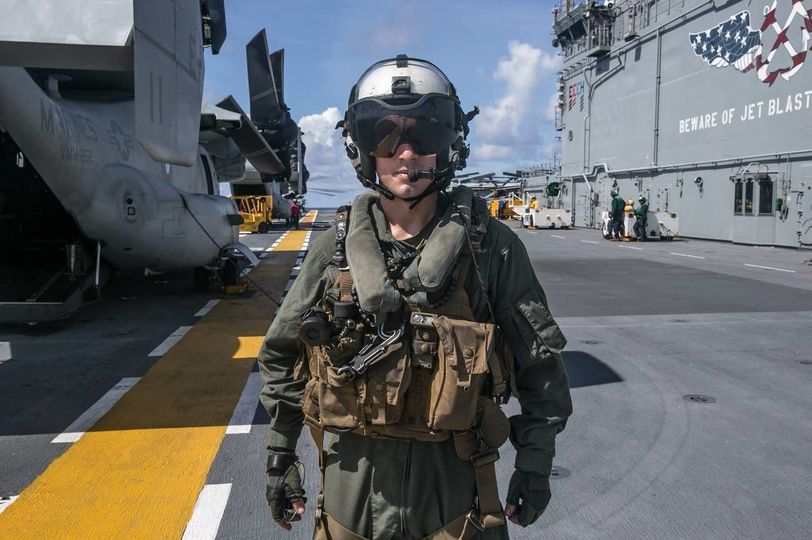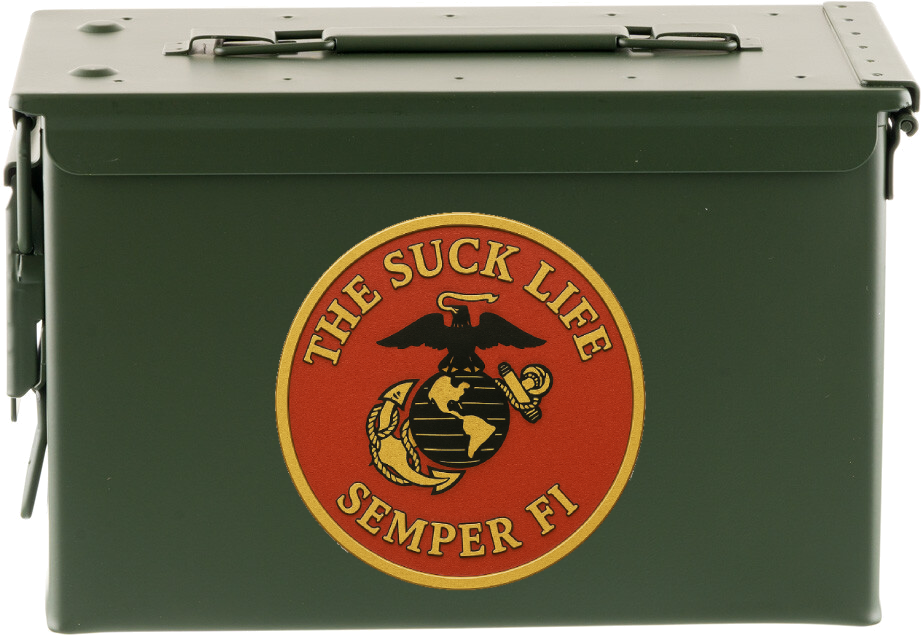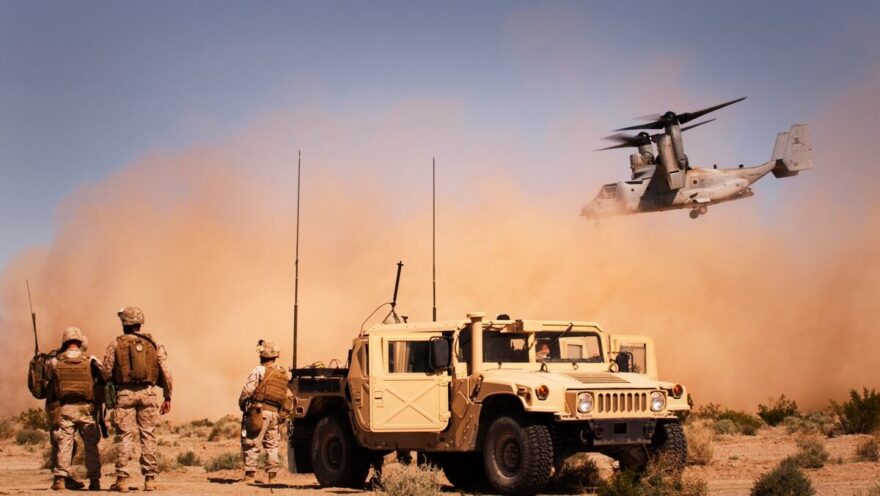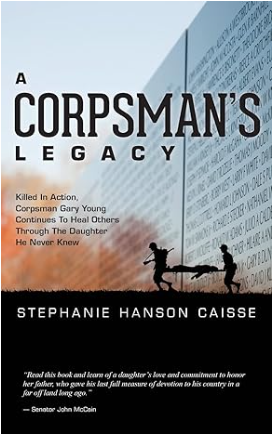Being a helicopter crew chief in the Marine Corps, particularly on an MV-22 Osprey, is an incredibly demanding yet rewarding role that requires a high level of skill, dedication, and resilience. The MV-22 Osprey is a tiltrotor aircraft that combines the vertical takeoff and landing capabilities of a helicopter with the speed and range of a fixed-wing aircraft, making it a critical asset for the Marine Corps. This role shares many similarities with the duties of Marine Corps helicopter crew chiefs from the Vietnam War era, underscoring the timeless nature of this vital position. Like their predecessors, modern crew chiefs are responsible for ensuring aircraft readiness, performing maintenance, and handling in-flight troubleshooting. Despite advancements in technology, the fundamental responsibilities and challenges—such as maintaining vigilance, adaptability, and quick decision-making under pressure—remain remarkably consistent.
The Selection Process
The selection process for the crew chief Military Occupational Specialty (MOS) in the Marine Corps is a rigorous and highly competitive procedure designed to identify the most qualified candidates for this critical role. Marines interested in becoming crew chiefs typically express their preference either during the recruitment phase or after completing their initial training. To be considered, candidates must meet specific qualifications, including stringent physical fitness standards and a proven track record of performance. The selection process involves a thorough review of their service record, physical fitness evaluations, and assessments of their technical skills and leadership potential.
For those interested in pursuing this MOS, it’s essential to seek guidance both before and after joining the Marines. Before enlistment, prospective recruits should speak with a Marine Corps recruiter, who can provide detailed information about the role, requirements, and the selection process. After joining, aspiring crew chiefs should consult with their chain of command or a career planner, who can offer advice on how to meet the qualifications and prepare for the selection process. This proactive approach ensures that candidates are well-informed and prepared to pursue the crew chief MOS effectively.
Training
The journey to becoming a helicopter crew chief begins with rigorous training. After completing basic training, candidates attend the Naval Aircrew Candidate School (NACCS) in Pensacola, Florida. The NACCS curriculum is designed to provide a solid foundation in aircrew skills and physical conditioning, featuring intense physical training, classroom instruction on aviation fundamentals, safety procedures, and survival skills. Candidates also learn the basics of aviation operations, navigation, communication protocols, and emergency procedures. Following NACCS, crew chief candidates undergo specialized training for the MV-22 Osprey, which includes detailed classroom instruction and hands-on experience with the aircraft’s systems, maintenance procedures, and emergency protocols.
Once formal training is complete, new crew chiefs are assigned to their first squadron, where they begin a crucial period of on-the-job training. This phase involves integrating into their new unit, working closely with experienced crew chiefs, and learning the specific operational procedures and protocols of their squadron. They familiarize themselves with the aircraft and equipment in their operational environment while building relationships with team members. This transition phase is essential for applying the knowledge gained during formal training to real-world scenarios, adapting to the dynamics of their squadron, and refining their practical skills.
Maintenance
One of the primary responsibilities of a crew chief is the maintenance of the aircraft. This includes conducting pre-flight, post-flight, and periodic inspections to ensure the MV-22 is always mission-ready. Crew chiefs are responsible for troubleshooting mechanical issues, performing repairs, and replacing parts as necessary. This requires a deep understanding of the aircraft’s systems and a keen eye for detail, as even minor issues can have significant consequences during flight operations.
Flight Time
During flight operations, the role of the crew chief is indispensable and multifaceted, involving critical responsibilities before, during, and after each mission. Prior to takeoff, the crew chief performs meticulous pre-flight inspections to verify that every aspect of the aircraft is in optimal condition. This includes checking the MV-22 Osprey’s engines, hydraulics, avionics, and fuel systems to ensure they meet all safety and operational standards. The crew chief’s vigilance at this stage helps to prevent potential issues that could jeopardize the mission or crew safety.
Once the aircraft is airborne, the crew chief’s role shifts to a dynamic and active position. They continuously monitor various aircraft systems, tracking performance metrics and ensuring that all systems function within their designed parameters. This real-time oversight is crucial for detecting any irregularities or malfunctions that could arise during flight. Additionally, crew chiefs assist pilots with navigation and communication tasks, providing essential support by relaying information and coordinating with air traffic control and other aircraft as needed.
In the management of cargo and passengers, the crew chief ensures that all items are securely loaded and properly distributed within the aircraft. They handle the logistics of cargo placement and oversee the safe boarding and deboarding of passengers, which requires careful planning and execution to maintain the balance and stability of the aircraft.
Throughout the flight, the crew chief must remain exceptionally alert, ready to respond to any emergencies that may occur. Whether dealing with mechanical issues, sudden changes in mission parameters, or in-flight emergencies, the crew chief’s ability to make swift, informed decisions is vital. Their role demands a high level of situational awareness and the capacity to act decisively under pressure, ensuring the safety and success of each mission. This constant state of readiness and adaptability underscores the importance of the crew chief’s position in maintaining operational integrity and achieving mission objectives.
Relationships with Pilots and Others
The relationship between a helicopter crew chief and the pilots, along with other crew members, is foundational to the success of aviation operations in the Marine Corps, characterized by effective communication, mutual trust, and respect. Communication is the lifeline, ensuring accurate and timely information exchange regarding the aircraft’s condition, environmental conditions, and potential hazards, which allows pilots to make informed decisions and respond to emergencies. Trust, built over time through consistent performance and reliability, is mutual, as both pilots and crew chiefs depend on each other’s expertise. Respect is shown through professionalism, recognizing each other’s skills, and valuing contributions, fostering a positive working environment. Regular collaboration, from pre-flight briefings to post-flight debriefings, ensures everyone is aligned and strengthens team cohesion. A shared commitment to the mission creates a sense of camaraderie and purpose, driving each member to perform their best, particularly in high-stress situations like combat zones. Interpersonal dynamics, developed through shared experiences and personal connections, further solidify these relationships, creating a supportive environment essential for handling the demanding challenges of Marine Corps aviation operations.
Responsibilities
The responsibilities of a crew chief extend beyond maintenance and flight operations. They are also involved in mission planning, coordinating with ground crews, and ensuring that all safety protocols are followed. In a combat zone, these responsibilities become even more critical. Crew chiefs must be prepared for rapid deployments, perform under high-stress conditions, and ensure the aircraft can support various mission types, from troop transport to medical evacuations.
Flying in a Combat Zone
Flying in a combat zone presents unique challenges and risks that demand the highest level of vigilance and adaptability from crew chiefs. They must be constantly alert and ready to respond to imminent threats, such as enemy fire or mechanical failures, which can occur without warning. Adaptability is key, as mission parameters can shift rapidly based on evolving tactical situations, requiring crew chiefs to adjust their plans and actions on the fly. The ability to remain calm under intense pressure, coupled with the capacity to make quick, informed decisions, is crucial in these high-stakes environments. This composure ensures the safety of the crew and the success of the mission. Additionally, crew chiefs must coordinate seamlessly with pilots and other team members to navigate these unpredictable scenarios, relying on their training, experience, and mutual trust to overcome the myriad challenges inherent in combat flight operations.
Top Ten Priorities of a Crew Chief
Aircraft Readiness: Ensuring the MV-22 Osprey is always mission-ready involves a comprehensive approach to aircraft maintenance and preparation. This includes conducting routine inspections, verifying that all systems are functioning correctly, and addressing any potential issues before they become problems. Crew chiefs meticulously check the aircraft’s engines, hydraulics, avionics, and other critical components to guarantee that the aircraft is fully operational and capable of performing its intended missions. Their vigilance ensures that the aircraft is in top condition and ready for any deployment or mission at a moment’s notice.
Safety: Maintaining strict adherence to safety protocols is paramount for the well-being of both the crew and the aircraft. Crew chiefs are responsible for enforcing safety procedures during all phases of flight operations, including pre-flight checks, in-flight activities, and post-flight inspections. This involves ensuring that all safety equipment is operational, that emergency procedures are in place and understood, and that the aircraft is free from any hazards that could jeopardize the mission or the crew’s safety. Their commitment to safety helps to prevent accidents and ensures a secure environment for all involved.
Maintenance: Conducting thorough inspections and repairs is a core responsibility of the crew chief, ensuring that the MV-22 Osprey remains in optimal condition. This includes performing detailed pre-flight, post-flight, and periodic maintenance checks to identify and address any mechanical issues. Crew chiefs are skilled in troubleshooting and repairing a wide range of aircraft systems, from engines and hydraulics to avionics and landing gear. Their expertise in maintaining the aircraft ensures that it operates efficiently and reliably during all missions.
Communication: Facilitating clear and effective communication between the crew and ground support is essential for successful flight operations. Crew chiefs serve as a crucial link between pilots, ground personnel, and other team members, ensuring that everyone is informed of the aircraft’s status, mission details, and any changes in operational requirements. They relay important information, coordinate logistical support, and address any communication issues that arise, helping to streamline operations and prevent misunderstandings.
Emergency Preparedness: Being prepared to handle any in-flight emergencies or mechanical issues is a vital aspect of the crew chief’s role. This includes having the knowledge and skills to quickly address problems such as engine failures, hydraulic malfunctions, or other critical issues that may arise during flight. Crew chiefs are trained to remain calm under pressure, make swift decisions, and implement emergency procedures to ensure the safety of the crew and the success of the mission. An important part of this responsibility is understanding and executing the “Nine Lines,” a standardized procedure used to communicate essential information during medical evacuations. The “Nine Lines” protocol ensures that critical details—such as the location of the emergency, the number of casualties, and their medical condition—are communicated clearly and efficiently to coordinate timely and effective response actions. Mastery of this protocol is crucial for ensuring swift and organized support in emergency situations, enhancing the effectiveness of rescue and evacuation efforts.
Training: Continuously updating skills and knowledge is essential for staying current with the latest advancements in aircraft systems and procedures. Crew chiefs regularly engage in training programs to enhance their technical expertise and remain proficient in their roles. This ongoing education covers new technologies, updated maintenance procedures, and evolving operational protocols, ensuring that crew chiefs are well-prepared to handle any challenges that arise.
Mission Planning: Assisting in the planning and execution of missions involves coordinating with various teams to ensure that all aspects of the operation are thoroughly considered. Crew chiefs contribute to mission planning by providing insights into aircraft capabilities, logistical requirements, and potential challenges. Their involvement helps to develop effective strategies for mission success, ensuring that the aircraft and crew are fully prepared for their assigned tasks.
Cargo Management: Overseeing the safe loading and unloading of cargo and passengers is a critical responsibility for crew chiefs. This includes ensuring that all items are properly secured and balanced within the aircraft to maintain stability and safety during flight. Crew chiefs are also responsible for coordinating the efficient handling of cargo and passengers, which requires careful planning and execution to meet mission requirements and ensure a smooth operational flow.
Team Coordination: Working closely with pilots and other crew members is essential for ensuring cohesive operations and achieving mission objectives. Crew chiefs collaborate with pilots to align on mission goals, share relevant information, and address any operational concerns. They also support and coordinate with other crew members to ensure that all tasks are completed efficiently and effectively, fostering a collaborative and unified team environment.
Adaptability: Being ready to adapt to changing mission requirements and combat conditions is crucial for maintaining operational effectiveness. Crew chiefs must be flexible and responsive to evolving scenarios, whether it’s adjusting to new mission parameters, dealing with unexpected challenges, or adapting to dynamic combat environments. Their ability to quickly adjust plans and strategies ensures that they can handle any situation that arises and continue to support mission success.
Being a helicopter crew chief on an MV-22 Osprey in the Marine Corps is a challenging yet immensely fulfilling role. It requires a blend of technical expertise, physical stamina, and mental resilience. The crew chief is a vital component of the Marine Corps’ aviation operations, ensuring that the aircraft is ready to perform in any situation, whether in training, routine missions, or combat zones. This position not only demands high levels of responsibility and skill but also offers the opportunity to be an integral part of a team dedicated to achieving critical missions and supporting the overall goals of the Marine Corps.

“Being a crew chief on the osprey is an awesome job, it’s something that excites me and makes me want to get up in the morning. I love learning the different components of the aircraft, being able to fly and be part of a crew, and just being in that environment with pilots and with the other crew chiefs to accomplish the mission.”
Kyle J. Daly, Corporal, USMC, 6176, Tiltrotor Crew Chief, MV-22, VMM-262 (Rein), 31st MEU
Marine Corps photo by Lance Cpl. Brienna Tuck
As we reflect on the vital role of helicopter crew chiefs in the Marine Corps, we honor those who have sacrificed their lives in combat or training. Since the early days of Marine aviation, these brave individuals have been crucial to mission success, demonstrating unparalleled courage and dedication. Their ultimate sacrifice is a testament to their commitment to service, and their legacy continues to inspire and guide future generations of crew chiefs. Their memory is honored through the excellence and resilience of those who follow in their footsteps. #notforgotten
Featured image: defensenews.com

Ads suck. This site is 100% ad-free and reader-supported.
If this article added value to your day or meant something to you, toss a couple bucks in the ammo can to keep us in the fight. Thank you.




 Semper Fidelis
Semper Fidelis

